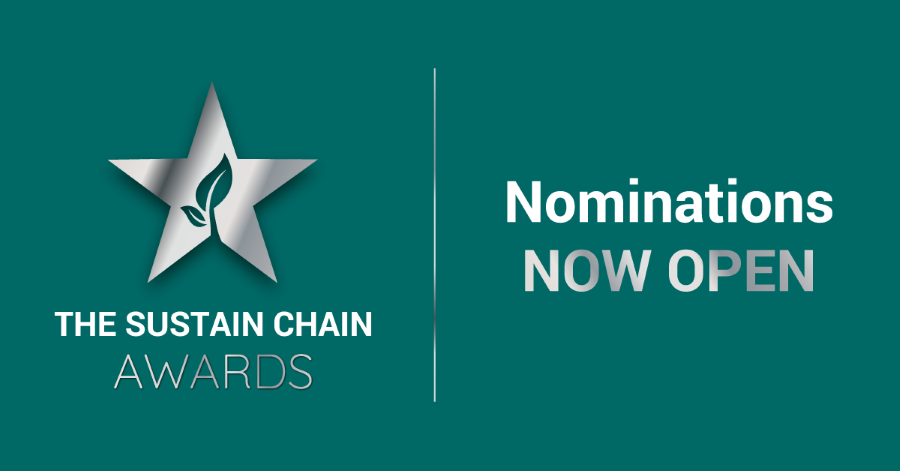
Strategies Procurement Professionals Can Use to Promote Sustainable Sourcing
Sustainable sourcing has evolved from a corporate buzzword into a critical element of modern procurement strategies. With rising environmental regulations, stakeholder expectations and mounting pressure to mitigate climate change, industry professionals are uniquely positioned to drive significant impact. However, the question remains — how can you effectively incorporate sustainability into complex procurement operations?
Establish Clear Sustainability Goals and Policies
Before procurement professionals can evaluate suppliers or influence purchasing decisions, it’s vital to define what sustainability means in the context of their organisation. Clear, actionable goals are the foundation for an effective sourcing strategy. These objectives should align with your company’s broader environmental, social and governance objectives. For example, if your company aims to achieve net-zero emissions by 2040, procurement should directly contribute by selecting vendors with low-carbon operations or sustainable logistics solutions.
Measurable objectives are crucial. Goals such as reducing procurement-related greenhouse gas emissions by 25% over five years or achieving 60% sustainable spend within a specific category give your team something concrete to aim for. These targets should be embedded into procurement workflows, including supplier scorecards, request for proposal requirements and contract clauses.
Incorporate Sustainability Criteria Into Procurement Processes
Sustainability considerations must be fully integrated into your procurement processes rather than treated as an afterthought. This means evaluating suppliers on environmental stewardship, labor practices and corporate ethics in addition to price, quality and reliability. A supplier’s commitment to sustainability should be a core factor during qualification and ongoing performance assessments.
Including sustainability clauses in contracts is another essential step. Contracts can require suppliers to adhere to recognised standards, such as ISO 14001 for environmental management or SA8000 for social accountability. These provisions provide a legal framework for sustainability and hold suppliers accountable. Routine supplier audits and performance reviews should include sustainability KPIs to ensure long-term compliance and continuous improvement.
Moreover, centralised procurement platforms can standardise how sustainability criteria are applied. Teams can make more consistent and transparent sourcing decisions by integrating scoring systems or decision matrices that factor in environmental and social impact. In doing so, sustainability becomes part of the DNA of your procurement function.
Collaborate With Suppliers to Promote Sustainability
Sustainability is not something you can simply impose on your suppliers — it requires active collaboration. Building strong relationships with key businesses opens the door to innovation and shared goals. Rather than purely transactional, consider treating suppliers as strategic partners.
Open dialogue is the first step. Discuss your organisation’s sustainability objectives and invite suppliers to share their own. This two-way communication fosters mutual understanding and aligns expectations. For example, you might learn that a supplier is exploring recycled materials or more efficient manufacturing processes, which could enhance your own sustainable outcomes.
Providing training and resources can also accelerate your suppliers’ sustainability journeys. Consider offering webinars, case studies or toolkits to help them understand how they can meet your standards. Some leading companies go even further by co-investing in eco-friendly projects or facilitating peer-learning networks among suppliers. Walmart’s Project Gigaton is a well-known example, as it encourages suppliers to reduce greenhouse gas emissions and offers resources to help them set and reach their goals.
Use Technology and Data Analytics to Drive Decision-Making
Leveraging technology is essential to managing the complexity of sustainable sourcing. Data analytics and procurement software provide visibility into supplier performance, environmental impact and potential risks. These tools help procurement teams transition from reactive decision-making to proactive strategy development.
Spend analysis tools can identify which product categories have the highest environmental impact and where opportunities for improvement exist. Life cycle costing models can be used to evaluate products based on the total cost of ownership rather than upfront price, accounting for maintenance, energy use and disposal. This allows you to make financially sound and environmentally responsible decisions.
Advanced technologies such as artificial intelligence (AI) and digital twins offer even deeper insights. AI can help predict supply chain disruptions related to climate events or identify suppliers with poor environmental practices. Digital twins allow for scenario planning, enabling you to model the long-term sustainability impact of different sourcing strategies before implementation. These tools enhance decision-making and build resilience into your supply chain.
Prioritise Supplier Diversity and Local Sourcing
Sustainable sourcing encompasses more than just environmental factors — it also includes social equity and community impact. Prioritising supplier diversity and local sourcing supports underrepresented businesses and strengthens regional economies.
Working with minority-owned, women-owned, veteran-owned, and small local businesses promotes inclusivity and helps distribute economic opportunity more equitably. Organisations such as the National Minority Supplier Development Council and the Women’s Business Enterprise National Council provide directories and certifications that make it easier to identify qualified, diverse suppliers.
Local sourcing has the added benefit of reducing transportation emissions and shortening supply chains. This minimises environmental impact and improves agility and risk management. During the COVID-19 pandemic, organisations that relied on local suppliers were often better able to maintain continuity. By shifting more spend to local and diverse suppliers, you contribute to the long-term sustainability and resilience of both your organisation and the communities you serve.
Align With Global Sustainability Standards and Frameworks
Ensure your sustainable sourcing strategy is credible and consistent by aligning it with global standards and frameworks. These provide structure, benchmarks and shared language for sustainability efforts.
Standards like ISO 20400 offer detailed guidance on sustainable procurement practices, while the Global Reporting Initiative helps organisations track and report their sustainability performance. Following these frameworks streamlines internal efforts and enhances transparency and comparability with peers.
It is also important to stay ahead of emerging regulations. Legislation such as the European Union’s Corporate Sustainability Due Diligence Directive mandates that companies identify and mitigate environmental and human rights risks across their supply chains. Aligning your procurement practices with these requirements now can reduce the risk of noncompliance in the future.
Promote a Culture of Sustainability Across the Organisation
Procurement may lead to sustainable sourcing initiatives, but long-term success depends on organisation-wide commitment. Promoting a culture of sustainability ensures that these efforts are supported, understood and adopted beyond your team.
Education plays a critical role. Offering training and resources to departments such as finance, legal, and operations can help break down silos and encourage cross-functional collaboration. When all departments understand how procurement contributes to sustainability, they are more likely to support the necessary changes.
Recognition and communication also matter. Celebrate wins — whether a successful supplier sustainability audit or a milestone in emissions reductions. Sharing these stories builds momentum and reinforces the value of sustainable sourcing. Over time, this fosters a mindset where sustainability is not seen as a cost but as a core part of your organisation’s identity and strategic advantage.
Make Sustainability a Strategic Imperative
Sustainable sourcing is more than just a trend — it’s a long-term strategy that delivers value across your supply chain. By embracing these strategies, you’re helping your organisation reduce risk, improve resilience and align with evolving global expectations. As procurement evolves, let sustainability be your guide to building a stronger, more ethical future.

